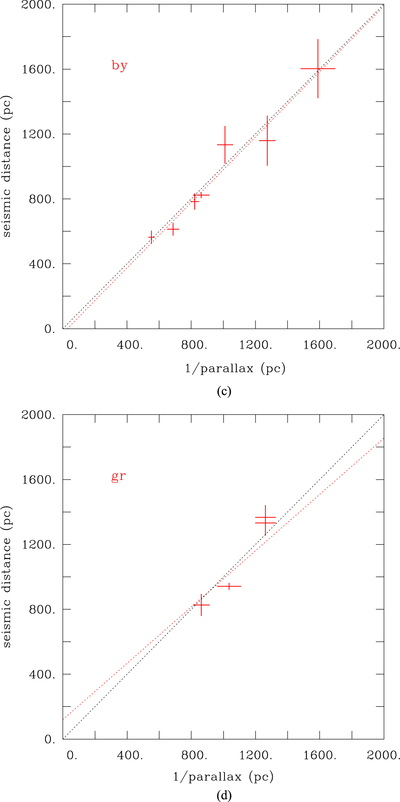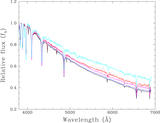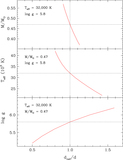Image Details

Caption: Figure 3.
(a) Comparison of the Gaia distance (obtained by simply inverting the measured parallax) with the distance derived by combining a seismic model with a model atmosphere and measured Gaia magnitudes in the two bands GBP and GRP. The latter is corrected for the effects of interstellar reddening. The plot does not include PG 0014+067, which is an outlier due to the uncertainty in the Gaia distance of d = 2794 ± 1037 pc (see the text). The black dotted line shows the 1:1 correspondence, while the red dotted line is a formal χ2 fit giving a correlation coefficient of 0.984. (b) Similar to Figure 3(a), but based on the Johnson magnitudes B and V. The correlation coefficient is equal to 0.972. The seismic distances to two binary stars, PG 0048+091 and EC 20117−4014, are upper limits obtained under the assumption of no interstellar reddening. They are indicated by dotted crosses. (c) Similar to Figure 3(a), but based on the Strömgren magnitudes b and y. The correlation coefficient is equal to 0.980. (d) Similar to Figure 3(a), but based on the SDSS magnitudes g and r. The correlation coefficient is equal to 0.881.
Copyright and Terms & Conditions
© 2019. The American Astronomical Society. All rights reserved.






